Tuesday Triage #48
- TUESDAY TRIAGE #48 by Vadim Drobinin
- On fine dining
- Things I enjoyed reading
- 1. Engineering a chess match against my brother by @mbrt_dev
- 2. I Am An Object Of Internet Ridicule, Ask Me Anything by @cdhermelin
- 3. How to think clearly by Tom Chatfield
- 4. Hilton's bizarre 1967 plan for a space hotel by Jacopo Prisco
- 5. Ancient Greek accents in ten rules by @AntigoneJournal
- 6. How to Get Yourself to Do Things by David Cain
- 7. Life of a salesman by @elisaslow
- 8. Reasons why bugs might feel "impossible" by @b0rk
- 9. Airbnb Is Spending Millions of Dollars to Make Nightmares Go Away by @livcarville
- 10. Rituals for hypergrowth: An inside look at how YouTube scaled by Shishir Mehrotra
- Things I didn't know last Tuesday
- 1. lord (n.)
- 2. Mary Mallon
- 3. Tulip Bulb Soup
- 4. St Dunstan-in-the-East
- 5. L. Ron Hubbard thought tomatoes can scream
- 6. Şalgam
- 7. Liqueur de Coquelicot
- 8. EURion constellation
- 9. Carrington Event
- 10. Archimedes Eureka Moment
- Book of the week
- Thank you and see you in a week!
TUESDAY TRIAGE #48
by Vadim Drobinin ¶
Your weekly crème de la crème of the Internet is here!
15.06.2021 (read in browser)
On fine dining ¶
This week I didn't cook much, except a few experiments I could probably cover in the next edition, and that one gig over the weekend where I lent a hand to make some burgers at a birthday party with a view over Thames.
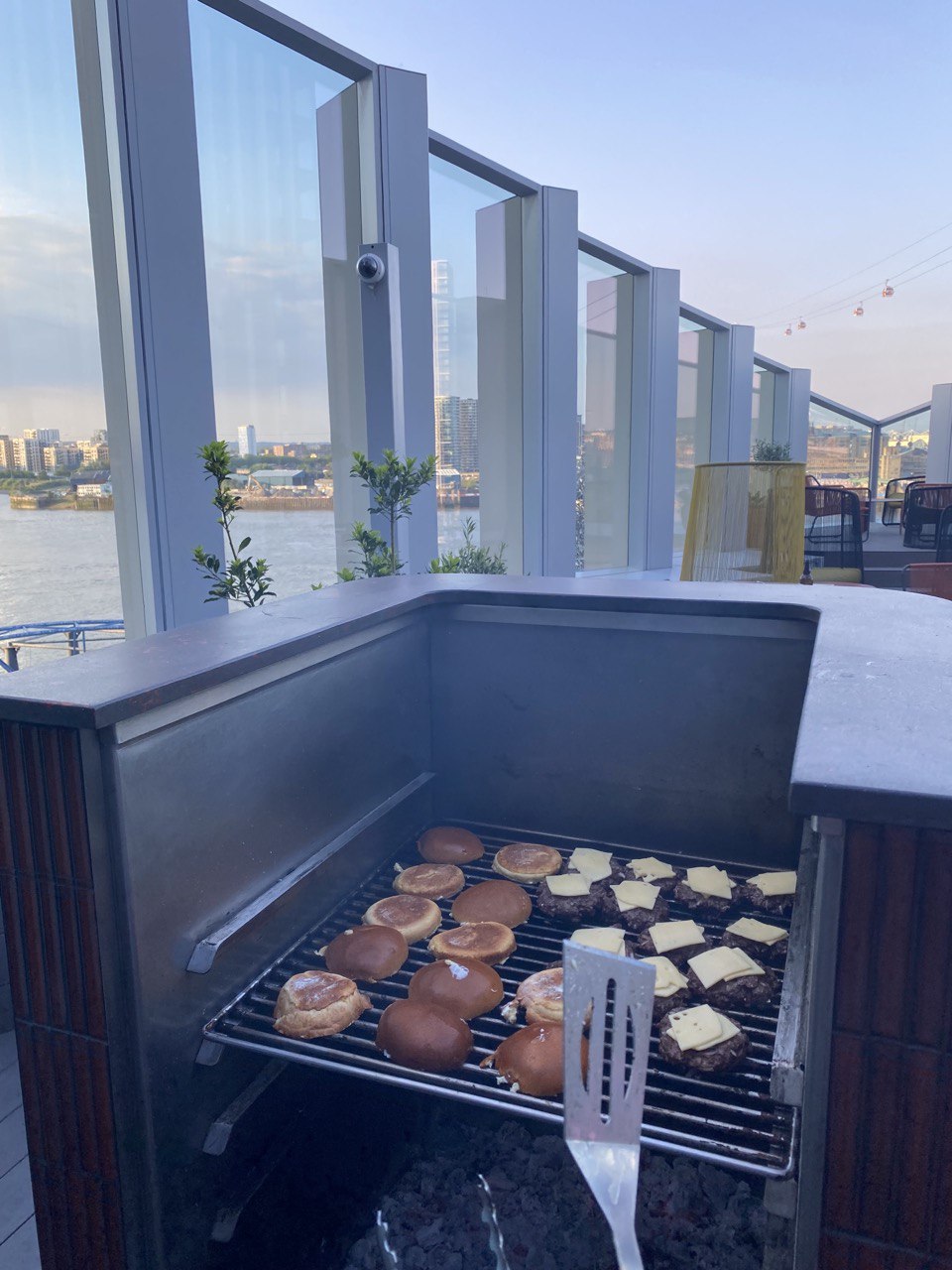
However I had a chance to finally visit Davies and Brook, a restaurant opened in London by Daniel Humm, the chef of 3 Michelin star restaurant in NYC, called Eleven Madison Park.
In the spirit of the latter, this one is named after the intersection of streets it's located at, too. Some dishes actually mirror the ones on the other side of the pond, which is a nice way to save on a return ticket to the States.
We both had the same tasting menu and it is quite good, lots of nice textures and variations on simple ingredients.
My favourite was probably the amuse bouche, though. Peas, vinegar, bread, and goat butter with pesto.

Also the yellow creme here was quite unexpected: it is made out of corn but has a very mellow buttery texture.
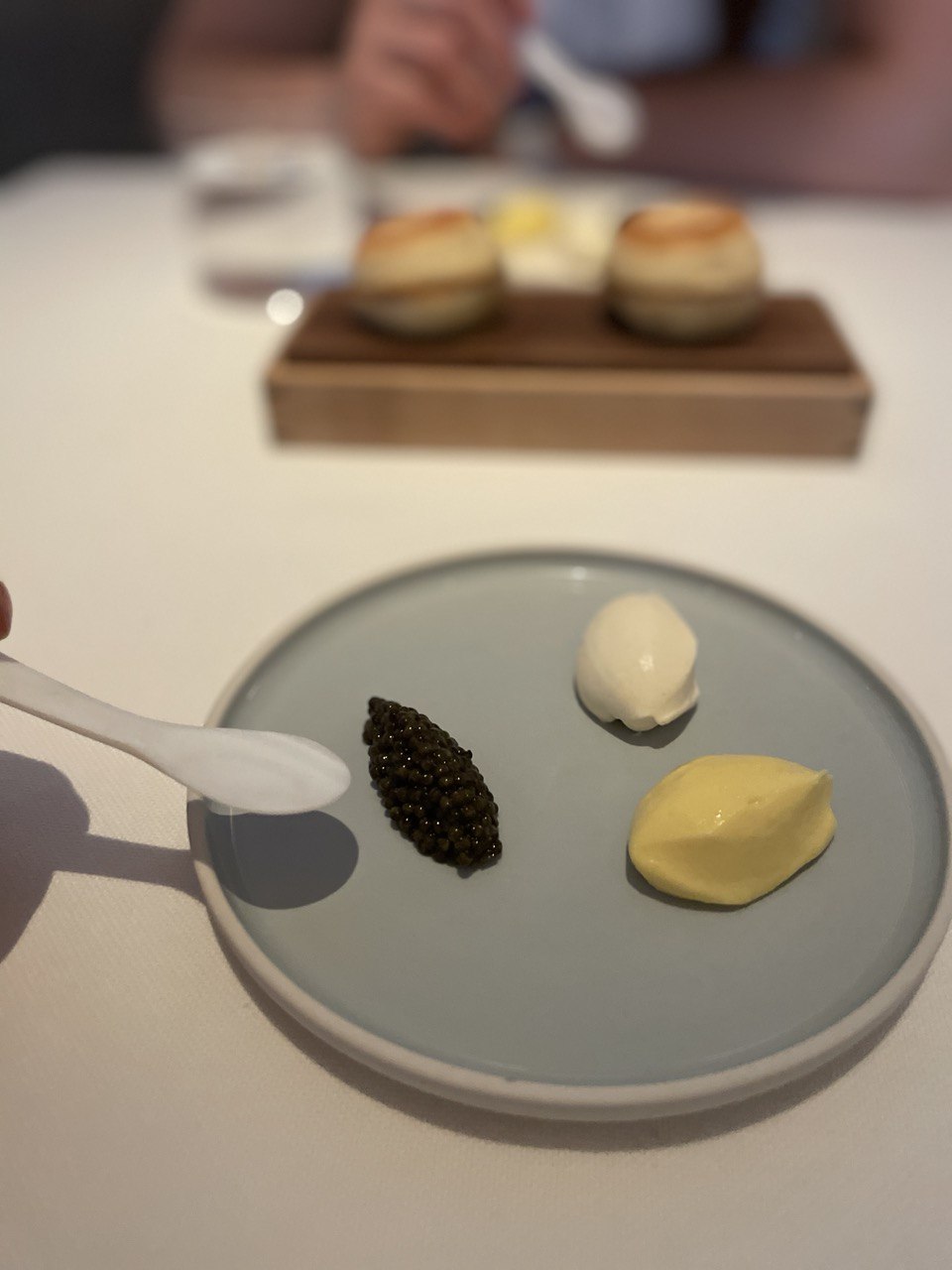
And the dessert was excuisite: the infamous Milk & Honey, milk-infused ice cream (yeah, sounds hilarious) with a ball of honey hidden in the middle, and some bee pollen sprinkled around.
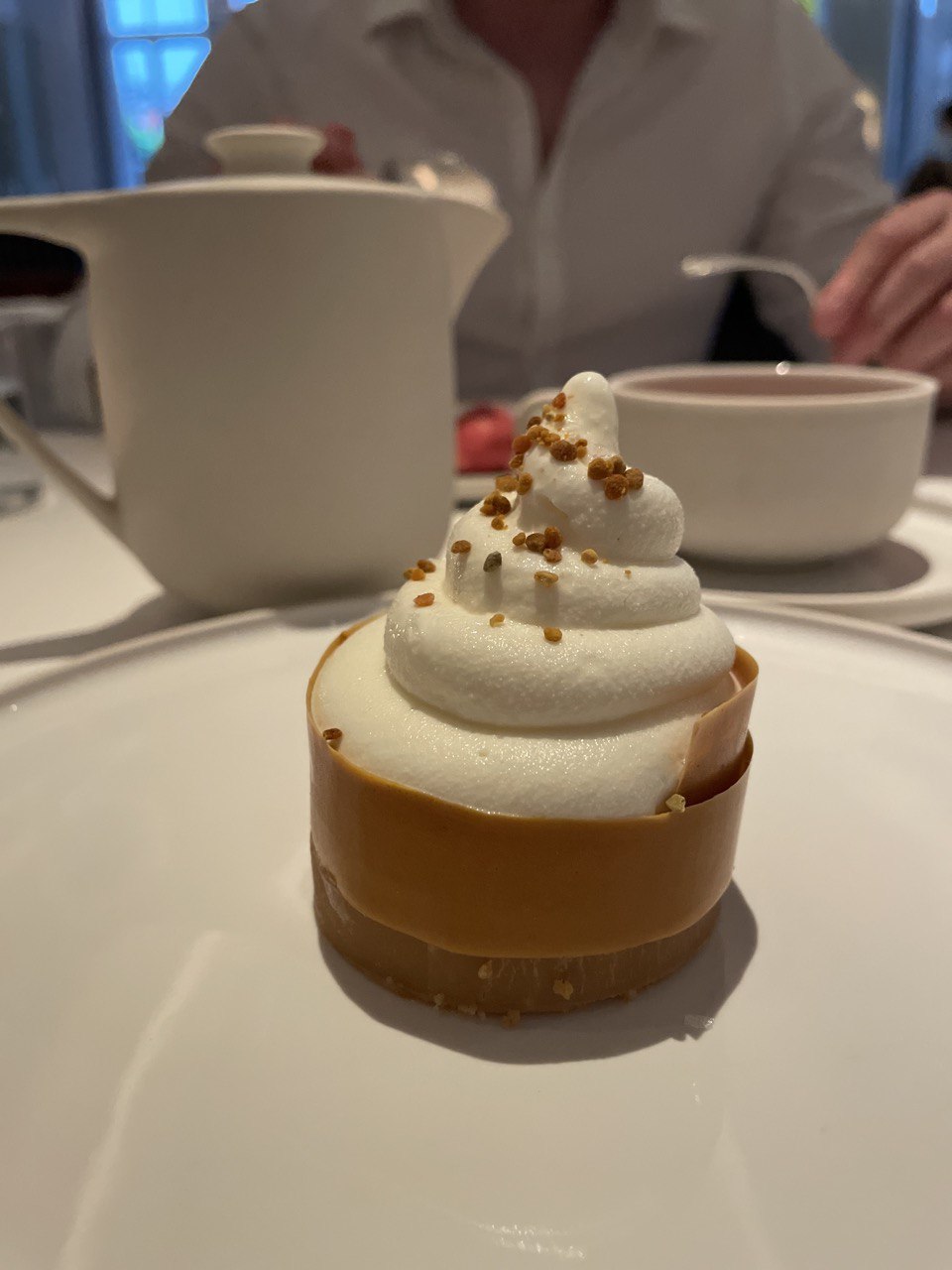
The other parts of the menu were quite good too, but I just don't want to spoil the experience for those who happen to visit them too.
A spoiler though: the duck they serve is great, and is made by those familiar with the old ways – no sous vide whatsoever. Also they age it for two weeks (we got lucky to get a tour of the kitchen):
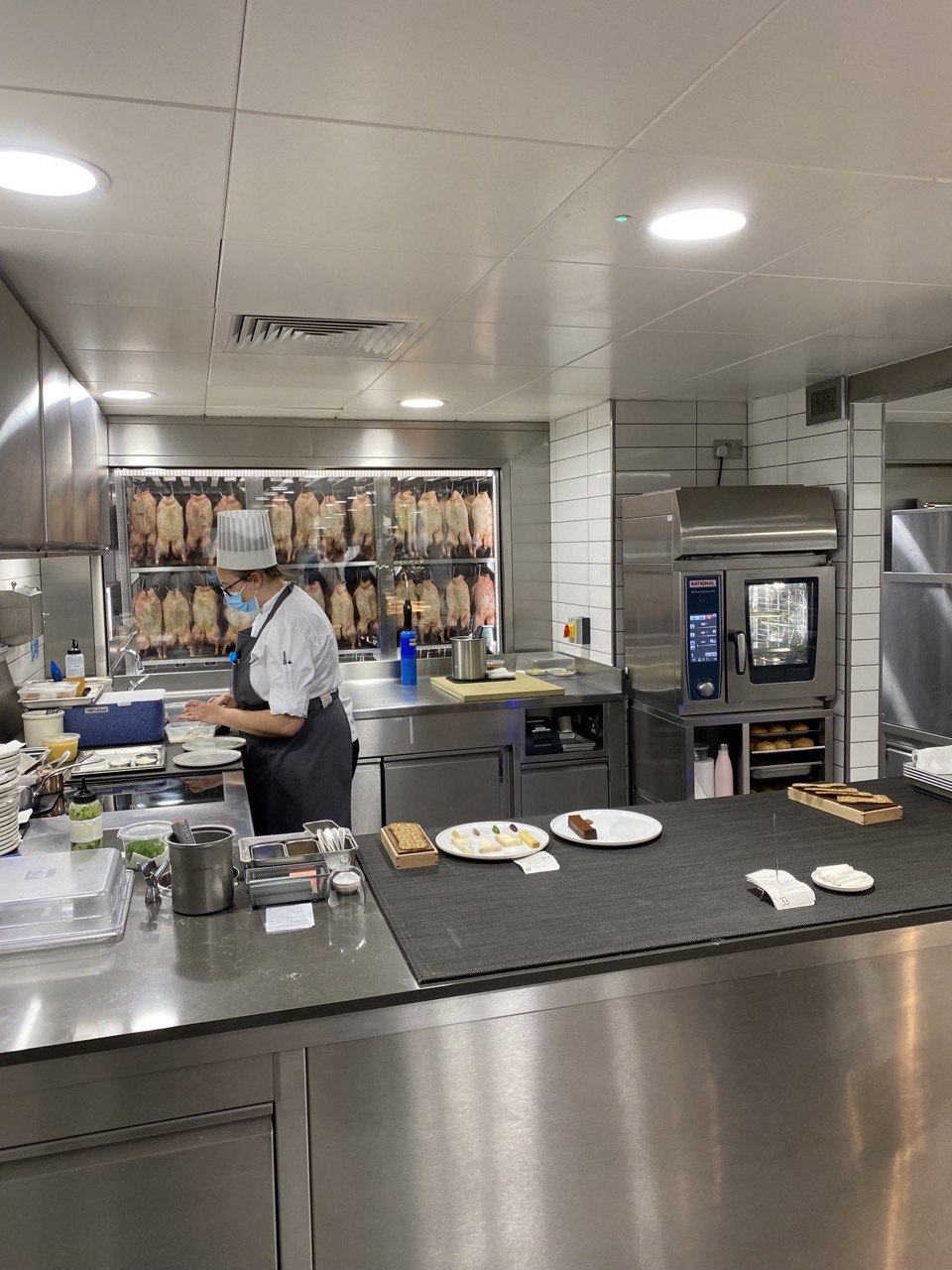
Things I enjoyed reading ¶
1. Engineering a chess match against my brother by @mbrt_dev ¶
What'd you do to win a chess match without particular skills? Well, just as an option, you could unleash the power of modern technologies to analise and predict moves of the opponent, and then just come up with a best possible countermoves for the most probable ones:
As if I were predicting the future, in my match against PlayerX, we got into an Alekhine defense. Put under pressure he did end up blundering his knight at move 5. Turns out even players much better than you end up making one mistake after another when they are at a disadvantage. It’s easy to play accurately when you’re winning, but can you keep your cool when you are losing? At move 10 I was at a +7.1 advantage, pretty much impossible to lose, but I was also out of my preparation.
Those who played them in early 2000's should remember Palm Z22 and its competitors -- they were small enough to fit into a pocket and had one of the first engines capable to list best moves based on the board, so that doesn't even come through as a surprise.
2. I Am An Object Of Internet Ridicule, Ask Me Anything by @cdhermelin ¶
Here is one way to make a living in New York City:
My solution was to grab my typewriter that I bought at a yard sale for 10 dollars and bring it to a park. I’d write stories for people, on the spot — I wouldn’t set a price. People could pay me whatever they wanted. I knew that I had the gift of writing creatively, very quickly, and my anachronistic typewriter (and explanatory sign) would be enough to catch the eye of passersby.
As a proud owner of a typewriter, I am yet to bring it to a coworking place, but when I do Internet probably won't forgive either.
3. How to think clearly by Tom Chatfield ¶
This is a great post for anyone struggling to pull their thoughts into a clear thin line of ideas:
Our assumptions, in other words, aren’t just unexamined ideas. They’re also the roots of identity and allegiance; the stuff of our personal and shared histories; of our communities and our morality. They are the sources of much of the greatest good and deepest harm we do to one another. That which we take as ‘given’ is nothing less than the bedrock of what we believe the world to be.
4. Hilton's bizarre 1967 plan for a space hotel by Jacopo Prisco ¶
Check out the link for photos, but this is also a nice story about one man's desire to bring his chain of hotels to the space.
First on his road map was the Orbiter Hilton, a sort of space laboratory whose 14 levels were designed to accommodate up to 24 people. It was intended for "short trips in space," such as stopovers on a journey to the moon or another planet, and would welcome guests arriving in "a six-man ferrycraft," Hilton explained.
Probably would make lots of sense in a few decades?
5. Ancient Greek accents in ten rules by @AntigoneJournal ¶
Despite learning Latin, I never got fascinated by Ancient Greek – that being said, never until I read about the beautiful logic behind accents in the language.
What about when the syllable that should have an accent is lost in elision? In Greek, it is only short vowels that allow elision, so we’re not having to deal with circumflexes going AWOL. In practice, we are talking about word-final grave accents being lost in the fray.
6. How to Get Yourself to Do Things by David Cain ¶
If someone anxious to start things were to ask me about the best essay on deal in with it, I would keep linking to this one:
The moment you start acting on something, you are at the beginning of the end of the anxiety associated with that thing. Many or most procrastinators are pessimists, habitually overestimating the difficulty of what they are avoiding. They think doing it is the hard part. But not doing it is much harder. The odd task that turns out unexpectedly hard doesn’t change anything — the counterproductive phase will always be counterproductive, and the anxiety will always shrink with action.
This is a very powerful advice; people tend to think less of themselves than they actually are.
7. Life of a salesman by @elisaslow ¶
I thought salesmen travel throughg America and sell some ridiculous stuff, like plastic veggie graters and transparent vaccum cleaners, but apparently there also those who sign offers on terribly expensive swimming pools:
But the more he learned about pools, the more he found them representative of something larger. They were carvings etched into back yards as a mark of ascent, commemorating a customer’s arrival in the upper middle class. They were a signal: You had a pool, you were an American somebody. Frank loved to visit his construction sites, exchange his few words of Spanish with the crew and then patrol the area with a digital camera.
All in all, the story is more about people than about the actual job.
8. Reasons why bugs might feel "impossible" by @b0rk ¶
Here is the reason I don't like dealing with bugs:
With most bugs, only one thing is going wrong – everything in the system is working correctly except 1 thing and you just need to identify the 1 thing that’s causing the problem.
It’s a lot harder when multiple things are broken at once – maybe there’s a bug in your program, and also a bug in a library you’re using, and also some unexpected behaviour on the part of your load balancer.
But also 99% of those bugs rarely affect more than a few users, so that to me justifies prioritising features over obscure issues.
9. Airbnb Is Spending Millions of Dollars to Make Nightmares Go Away by @livcarville ¶
A nice piece on an almost secret Airbnb department who's only job is to make sure they recieve as little public complaints as possible.
The hardest part of the job, the former agents say, was making peace with their role in keeping cases quiet and ensuring that victims and their families didn’t blame the company. Sometimes they were told to prioritize less traumatic situations involving reality-TV stars and others with big social media followings, which they say made them uncomfortable.
10. Rituals for hypergrowth: An inside look at how YouTube scaled by Shishir Mehrotra ¶
A very interesting post on how YouTube grew into what it is today.
Though YouTube was a popular consumer property, it was far from a given that it would be a viable long term business and many critics thought it was likely to be Google’s first failed acquisition. This meant that most of the team that came on board was “more pirate than navy.” By the time I left in 2014, the team had grown to over 2,000 employees. We had many growing pains through the years, but became well known as a high-performing, fast-moving team.
Also I just realised that I barely remember the Internet without it, even though it came into my life way later than it was created.
Things I didn't know last Tuesday ¶
1. lord (n.) ¶
I didn't even think of the word's ethymology and yet it makes so much sence now.
Old English
hlafordis a contraction of earlierhlafweard, literally "one who guards the loaves," fromhlaf"bread, loaf" (see loaf (n.)) +weard"keeper, guardian" (from PIE root *wer- (3) "perceive, watch out for").
For those curious for more, lady literally meant "bread-kneader".
2. Mary Mallon ¶
Must be a horrible fate:
An Irish-born cook believed to have infected 53 people with typhoid fever, three of whom died, and the first person in the United States identified as an asymptomatic carrier of the disease, Salmonella typhi. Because she persisted in working as a cook, by which she exposed others to the disease, she was twice forcibly quarantined by authorities, eventually for the final two decades of her life.
But partly thanks to her we have most of the food safety standards these days.

3. Tulip Bulb Soup ¶
Speaking about food, tulip bulbs were a popular substitution for potatoes in the Netherlands during the WWII, but these days they are being turned into luxurious dishes:
“[Tulip bulbs] are quite a luxury product, since it takes five or seven seasons to make one,” says Emile van der Staak, chef at De Nieuwe Winkel. “I think it’s even more expensive than caviar when you factor in all of the time and energy.”
4. St Dunstan-in-the-East ¶
I've been living in London for almost four years but never knew that there is a garden in a ruined church right next to Tower Bridge.
St Dunstan-in-the-East was a Church of England parish church on St Dunstan's Hill, halfway between London Bridge and the Tower of London in the City of London. The church was largely destroyed in the Second World War and the ruins are now a public garden.
Must be a nice picnic spot.

5. L. Ron Hubbard thought tomatoes can scream ¶
The infamous creator of the church of scientology believed that tomatoes feel pain and that you can hear them scream when they are sliced.
The crocodile clips are jabbed in and then a nail is used to torture the already traumatised tomato to see if it felt pain (warning: some tomatoes were hurt in the making of this photo). The Hub asserted that when connected to the electropsychometer, you could measure these responses. When it’s quiet enough, you can hear the tomatoes scream.
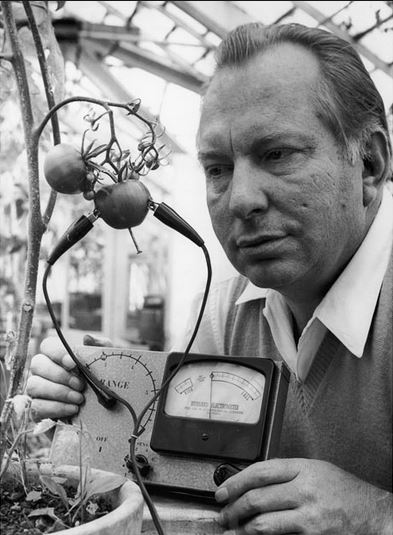
Such a beautiful relegion.
6. Şalgam ¶
Sounds like a smoothie made out of pickles juice and beetroot but apparently is very good for health:
Although the Turkish word şalgam literally means "turnip", şalgam is made with the sour and salty brine of purple carrot pickles, salted, spiced and flavoured with aromatic turnip (çelem) fermented in barrels with the addition of ground bulgur and rock salt.

7. Liqueur de Coquelicot ¶
Someone invented a liquour infused with poppy seeds:
The poppy flavour originates and is inspired from a French confectionery from 1872, back when the master confectioner Desserey started making poppy flavoured pastilles. They very quickly became a speciality of Northern France, which heightened the popularity of the poppy flower in the world of food and drink.
Tastes like Redbull if you were wondering.
8. EURion constellation ¶
Modern banknotes include a pattern that prevents them from being copied (printers in some typographies lock themselves and call the police).
The EURion constellation (also known as Omron rings or doughnuts) is a pattern of symbols incorporated into a number of secure documents such as banknotes and ownership title certificates designs worldwide since about 1996. It is added to help imaging software detect the presence of such a document in a digital image.
So I am not actually sure if you could print this page anymore and then make its copies.
9. Carrington Event ¶
One of those things that I can't really apprehend: a massive solar flair, first expected in the 19th century, could destroy all our electric infrastructure -- back then it melted telegraph wires everywhere.
A solar storm of this magnitude occurring today would cause widespread electrical disruptions, blackouts, and damage due to extended outages of the electrical grid. The solar storm of 2012 was of similar magnitude, but it passed Earth's orbit without striking the planet, missing by nine days.
Something like that happening today would affect pretty much everyone.
10. Archimedes Eureka Moment ¶
We've been to this statue in Manchester recently and it is both located far from common routes but also is surrounded with a fence and features an odd nose:
The placement of this statue is part of a wider collection of science-themed statues around that part of the University. The only downside is that it was just too tempting to climb on and they lobbed his nose off. They did repair it though but did a pretty rubbish job of it and now he looks like Voldemort with a serious case of face-rot.

Apparently students in the area weren't very gentle rubbing it.
Book of the week ¶
A few of my ongoing projects involve reproducing flavours of dishes I tried over the last weeks, and in most cases it is not as simple as just mixing together the ingredients from the menu.
One way to approach it is through my favourite medium, reading, and in my search for a better way to reproduce flavours I came across Bob Holmes' Flavor.
Chili eaters also tended to score higher on another aspect of personality called sensitivity to reward, which measures how drawn we are to praise, attention, and other external reinforcement. And when the researchers looked more closely, an interesting pattern emerged: sensation seeking was the best predictor of chili eating in women, while in men, sensitivity to reward was the better predictor. Hayes thinks that’s because machismo plays a role in the chili eating of men, but not women. “For women, there’s no social status to being able to eat the hottest chili pepper, while for men there is,” he speculates. Without the heavy hand of machismo on the scales, women’s chili eating is more strongly governed by their internal drive for excitement.
This is a great and deep dive into the science of taste, but instead of focusing on the scientific details of how it works, the author tries to explore different ways of paying more attention to flavours and goes back through time and space to find answers to his questions.
And also complains about tomatoes.
Thank you and see you in a week! ¶
If you have any questions, or want to suggest a link for the next newsletter, please drop me a message on Twitter or reply to this email.
Cheers! 🍸